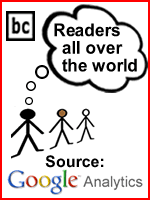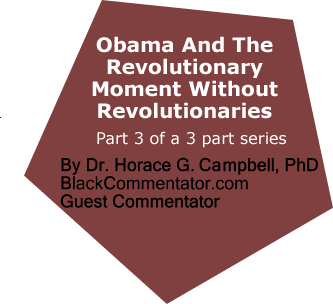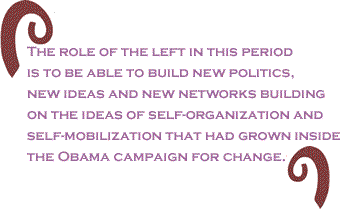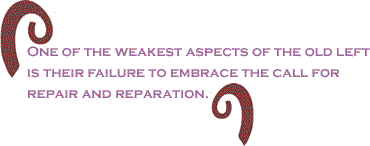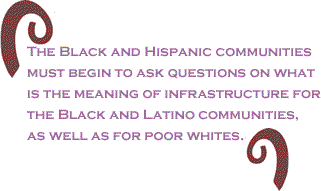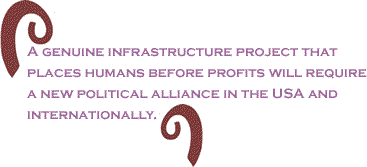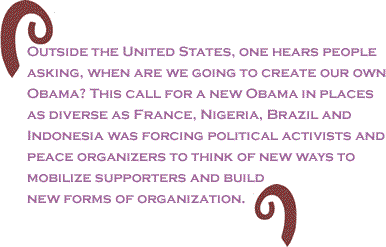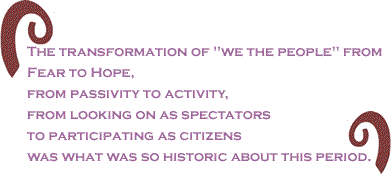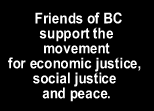
|
|||||||||||||||||||||||

Custom Search
|
|
 |
|
(This is the concluding section of a three-part series - Read Part 1, Part 2) Revolutionary moments and revolutionary ruptures Generally a revolution is defined as a sudden overthrow of the existing social, economic and political order. But these revolutions (such as the Cuban Revolution of 1959, the Iranian Revolution of 1979, the Chinese Revolution of 1949, the Russian Revolution of 1917, the French Revolution of 1789 or the Haitian Revolution of 1804 etc) arose out of moments when the ideas supporting or propping up the old order had become unsustainable. Usually there are events that mark the maturation of a revolutionary process but this process begins in the womb of the old society. The maturation to the critical break from the old takes place when the ideas, organization and leadership of the new rising forces can decisively remove the old order from political and social power. For example, in the case of the French Revolution, the principal ideas of feudal absolute monarchy based on the total centralization of power in the hands of the Bourbon kings had been overtaken by the accumulation of capital and the rise of egalitarian demands from below. This process gave rise to the ideas of liberty, equality and fraternity. There were theoreticians articulating the ideas which for that moment were revolutionary. The bourgeoisie and the working class temporarily unified to overthrow the outmoded feudal structures and leaders. Because of the weakness of the working classes (and their theoreticians), the revolution was hijacked by militarists such as Napoleon and channeled into imperialistic pursuits. The most outrageous aspect of this imperial pursuit in the name of revolution was the failed attempt to re-establish slavery in Haiti. Scholars in Europe who celebrate the revolution in France failed to link this weakness of the French revolution when it came to Africans and the crimes against the peoples of Haiti. The second but more profound example of the revolutionary moment is from Cuba. The old ideas of semi- feudal land ownership (latifundia), white supremacy, cultural repression through the church in alliance with imperialism had been overtaken by the demand for real independence in Cuba since 1933. Though the outmoded ideas of the plantation owners had worn thin, a brutal dictatorship was kept in power by the military (with the support of the government of the United States). From 1955, with the assault on the Moncada barracks, Fidel Castro sought to clarify the ideas of independence and reconstruction in Cuba. His speech, “History Will Absolve Me” served as the intellectual and ideological marker for consolidating the revolution and defeating the landed property owners in Cuba. Che Guevara deepened the theory of revolution and independence by linking the fortunes of Revolution in Cuba to a world wide revolution. Despite its temporary extension into the Soviet orbit in the period of the cold war, the ideological commitment to revolutionary change had such deep roots in Cuba that the Cuban leadership and the Cuban experiment survived to serve as the forerunner for the modern revolutionary moment in the Americas. Che Guevara had advanced and supported one of the central principles of Ubuntu when he declared that, “the true revolutionary is guided by strong feelings of love.” Fifty years after the victory of the Cuban revolution, the peoples of the Americas are at the cusp of a different revolutionary moment, one moment where there are new political movements in the Caribbean and Latin America which are again raising the question of revolution and revolutionary change. The Bolivarian Alternative for the Americas (ALBA) is only the embryonic form of this new movement towards revolutionary rupture. In these discussions from Venezuela, Bolivia and other parts of Latin America, there is an entirely new feature that has been brought into the discussion. That is the role of the ideas of the indigenous peoples in shaping the new political cultures that can emerge out of the challenges to the old ideas of domination over nature and dominion over other human beings. In these discussions, it is no longer possible to write and deliberate on revolution as if the indigenous and former enslaved are non-persons. The debate on revolution involves a fundamental transformation in people’s consciousness about the worth of all humans and radical feminist consciousness has deepened the understanding that revolutionary ideas must challenge patriarchal ideas about the state and human relations.
My proposition is that we are not speaking of revolution in the traditional sense today; we are talking about fundamental transformations. These are transformations at the levels of consciousness, transformations at the level of material organization, transformations at the level of gender relations and transformation at the level of our relationship to the planet Earth and the Universe. Already in the case of traditional politics, the new networking technologies (Web 2.0) has empowered new social forces. This new form of self mobilization and self organization from the bottom is transforming the political process and the nature of political struggles. These transformations in consciousness are taking place at the same time when the old ideas that legitimated capitalist exploitation are now in disarray. Grasping the moment It can be stated that, globally, the collapse of capitalist ideological hegemony is taking place in slow and imperceptible forms. Inside the United States the conjuncture is still dominated by the counter-revolutionary ideas and the counter-revolutionary impulse outlined in the first part of this three part series. The peace and justice activists have punctured the chokehold that was held by the neo-conservative forces. Briefly, there are numerous areas in the US political and economic life where one can discern the exhaustion of the old ideas. There are many but we want to highlight five. When, in September 2008, Alan Greenspan testified before Congress that the old monetarist ideas were wrong, it was a public admission of the failure of the neo-liberal economic mode of organization. Both liberal ad neo-liberal economic thinking and organization are now going through a deep crisis. The stimulus package of the Obama administration is a profound acknowledgement that only massive state intervention can save capitalism in the United States. Gone are the ideas of the supremacy of the freedom for unlimited accumulation by the capitalists without regulation (called Reageanomics and practiced to the hilt by Wall St.) This has collapsed like a house of cards and the financial bubble is having a cascading effect on all aspects of social and economic life. There is now a desperate attempt to save capitalism through nationalization without accountability and control by workers, communities and the mass of producers. Secondly, and tied to the first is the idea that the US society can consume the wealth and resources of the planet by the militarization of the planet earth (with a promise of domination from space – Star wars) and the unlimited expansion of wars and military bases. (This expansion had been justified in the name of rolling back Communism in Reagan’s time and in the name of the ‘war on terrorism’ in the Bush era). The Third is the restriction on scientific research and creativity by Newtonian concepts of hierarchy and conservative religious values. The choices for the US citizens in this Newtonian hierarchy led to the bottling up of the vast potential offered by grasping complexity and nuances of quantum mechanics. In its crudest forms, the government imposed a choice on the citizen to pick ‘good over evil’ (Ronald Reagan) and the slogan of ‘you are either with us or against us’ (George W. Bush) The emphasis on finance, Insurance and real estate reinforced the belief that science and scientific appreciation was secondary to greed and speculation. The fourth is the end of the fordist consumer-led economy that is destroying the planet earth. Millions of citizens are aware that there must be a fundamental break with the US “Affluent Society” model that is exacerbating global warming. In 1959, economist John Kenneth Galbraith argued that the power of advertising and consequent over-consumption had created an artificial demand for goods and services above the individual’s basic needs. This realization that the existing ‘American way of life’ is unsustainable is at the pivot of the breakdown of the old order. It is here where the youths are being most creative in their opposition to environmental racism and environmental destruction. Environmental justice and green consciousness are challenging old ideas of those who trumpet the development of the productive forces. The linearity of certain Marxists has also been challenged by this moment. The fifth element of the old order was the effort to entrench the most sexist, racist and eugenic ideas to support masculinist and racist government policies at all levels. This primordial ordering principle of US society precedes the above four and there are pressures from everywhere to shatter the chauvinistic assumptions embedded in US philosophies of democracy and freedom. The election of Barack Obama has not changed the racist or sexist structure of the US society, but it demonstrated that the permanent division between the working peoples cannot be supported to maintain the hegemony of the capitalist class.
These elements of the revolutionary moment have not reached the climactic stage in the society. But these challenges are apparent to the working peoples and the contradictions are breaking out at a pace where the old media and instruments of psychological warfare and mind control cannot control the information conveyed to the citizens. What is missing so far is the clarity of the revolutionary ideas, the new forms of organization and the resolute leadership that can mobilize the energies of the youth for a prolonged popular struggle for a fundamental break with the old politics, economics and militarism that is associated with U. S exceptionalism. Obama tapped into the deep yearning for change away from the counter revolutionary period and a glimpse of the revolutionary energy was seen on the mall in Washington on January 20. Obama himself dug deep into the revolutionary memories and ideas of Tom Paine in order to inspire the millions who wanted to make change real. Obama was being pushed by the momentum of the demands for peace and justice. Is the old left old? One of the many limitations of the US left in their discussion so far is that they do not completely relate the complexities and multi-dimensional layers of the collapse to the unsustainability of capitalism as a system. While making very good statements on the nature of the sub-prime crisis, there has not been a direct challenge to the hegemony of the capitalist class over the ideology and politics of the white working class. Racism had been the weapon of choice of the ruling class and the Obama campaign has opened one new possibility for all workers, black whites, Latinos, First Nation and Asian to see that they have a common goal in challenging capitalism. Without a historic base in the white working class movement, this old left do not see themselves as agents of change and have become the fiercest critics of the Obama transition, even before Obama was inaugurated. Moreover, while championing class struggles there are some sections of the left who have been blind to the historical consequences of white nationalism and institutionalized racism. By accepting the determinism of the idea of historical materialism, some internalize the idea that European stages of growth are necessary for revolutionary transformations. Implicit in this worship of Europe is the reverence for aspects of white supremacy. These progressive forces from the white left forgot the adage of Marx written at the time of the US Civil War, “Labor cannot emancipate itself in the white skin when in the black it is branded.” Will the white left combat whiteness and the new slavery-like conditions in the twenty first century? At the same time, will the black revolutionary move from developing a black agenda to the point of building an inclusive revolutionary and anti-racist agenda? The role of the anti-capitalist forces in this period is to be able to build new politics, new ideas and new networks, building on the ideas of self-organization and self-mobilization that had grown inside the Obama campaign for change. It is here where the alliances between the peace movements, the workers movement, the environmental justice movement, the Transgender movement, the anti-racist movement, the women’s movement and the reparations movement have room for building new militants and new sites of politics beyond elections. Such an alliance will be necessary to hold the Obama administration accountable, building as a new force inside the USA while aligning with the peace movement globally. This movement must continue to champion the call for the reduction of the US military budget and the dismantling of the offensive military planning of the war on terror. The US working class has no stomach for the kind of patriotism that supported the Patriot Act and the illegal invasion of Iraq. There must be intensified work in the peace movement for the United States to withdraw from Afghanistan. One of the weakest aspects of the old left is their failure to embrace the call for repair and reparation. In the United States, the white left has consciously distanced itself from the reparations movement. Reparations involve atonement, healing, justice, reconciliation and the repairing of what has been broken. In essence, the reparations movement requires a break with past crimes of capitalism and racism. Like the Civil Rights movement of 40 years ago, this reparations movement is broad with a progressive wing working for the overthrow of capitalism and one wing that consider reparations in relation to monetary compensation. In reality, monetary compensation is only one form of repair. The others are restitution, rehabilitation and guarantees of non-repetition. It is on the question of the guarantee of non-repetition where the left and revolutionary forces of the African descendants have joined with indigenous peoples and other oppressed peoples to redress the crimes of colonialism, slavery, imperialism and occupation.
The ruling class in the United States has cut off the people from the international discussions of the World Conference against Racism. It is significant hat no section of the white left in the United States has supported the call for the United States government to re-engage the forthcoming second round of the World Conference against Racism to be convened in Geneva in April 2009. In the absence of a large call from the US left for this new revival of anti-racism globally, the conservative forces in Congress is seeking to block US involvement in this important meeting. Archbishop Desmond Tutu of South Africa called on Barack Obama to apologize to the people of Iraq for the illegal invasion and occupation. Tutu is calling on decent humans in the USA to embrace the politics of truth and healing, basically calling for the politics of ubuntu. As if in a response to Desmond Tutu, Obama declared in his inauguration address that, “we will not apologize for our way of life nor will we waver in its defense.” It is the position of this author that the revolutionary moment is held back by the absence of healing in the US society. This healing will only be possible when there is public recognition and apology for the genocide of the first nation peoples and the enslavement of Africans. Ubuntu and the revolutionary moment Reparations and repair are elements of the philosophy of Ubuntu especially in relation to atonement, healing, justice, reconciliation and the repairing of what has been broken. The call by Archbishop Tutu for reparations joins with the world wide campaign of the reparations, peace and justice movement to accelerate a new vision of politics that is based on human cooperation and solidarity. It is important here to reiterate the core principles of Ubuntu. These are forgiveness, willingness to share, reconciliation and love. Earlier, we acknowledged both the contribution of Che Guevara and Martin Luther King to the principles of Ubuntu. Ubuntu exists in all languages and cultures but was suppressed by the individualistic creed of ‘modernity.’ Ubuntu is now needed to halt the headlong rush to deepen the hierarchies and divisions between humans in the era of artificial intelligence and biotechnology. Martin Luther King Jr. had warned against the deepening of materialism in US society at the time of the Vietnam war. In his speech Beyond Vietnam he had warned,
t is the brotherhood and sisterhood of all that is at the heart of the principles of Ubuntu. How can the revolutionary ideas of Martin Luther King be mobilized to heal the society from spiritual death? Ubuntu seeks to inspire spiritual renewal that is based on a sense of community among human beings. Ubuntu is also based on the principles of revolutionary non-violence. The violence of capitalism on a day to day basis has alerted revolutionaries to the reality that the past revolutions that were based on armed struggles consumed the revolutionaries. Violence in the revolution can now only be supported in the realm of self-defence. Ubuntu is breaking out, but at the economic level, the ideas of sharing and cooperation has not yet reached the old left that believed in the need for the development of the productive forces so that the class contradictions can become clear. Whose Stimulus and whose recovery?
Barack Obama has no organization at the moment that is independent of the electoral machine. Currently there is no revolutionary movement in the United States that can politically challenge the old ruling classes. But in the case of the financial crisis, even before his inauguration on January 20, there was unprecedented state intervention. Newspaper headlines are now routinely using the term nationalization. On Sunday January 25, the principal mouth piece of the ruling class the New York Times noted in the article, “Nationalization Gets a New, Serious Look,’ noted that,
While there are disputes between sections of the governing classes about the merits of nationalization there is not yet the discussion among the progressive forces about accountability, transparency and control of the nationalized entities by the working peoples. Even though the large scale financial institutions have been global in their operations, these corporate entities survived under the military and political umbrella of the UN national institutions. These financially institutions had developed a model of risk, speculation and ‘profit making ‘that sought to lead citizens to believe that these entities were ‘too big to fail.’ In terms of an economic system, the thinking behind the financial oligarchy was for a model for profit making, that while using the real economy’s assets, actually separated itself from the real economy. It is as if the banks were no longer satisfied with making profits by being linked to the real economy. They wanted higher profits and developed a model of profit making that separated its growth, from the growth of the real economy, but still allowed it to use the assets of the real economy. Now that their profit model has collapsed, because of the weight of it was too heavy for the assets of the real economy, the separate nature of their model prevents them from being able to go backward in time and use a model for profit making that reconnects them to the assets of the real economy. This economic crisis offers an opportunity to bring the financial sector under the control of the working people so that there is a clear relationship between the financial services sector and the real needs of food, clothing, shelter, health care and relevant education. Banks and financial instituitions must be controlled by democratic representatives to serve the needs of society, not for society to serve the needs of bankers. State intervention and nationalization in and of itself can strengthen the capitalist classes unless there is a vigorous demand from below for control by those with a vested interest in the reconstruction of society for the needs of human beings. Larry Summers and the current crop of economic advisers want to steer the policies of the Obama administration in ways to perpetuate the very same structure and profit models used by the banks.. But like Robert Rubin, Henry Paulson and Geithner, this vision is limited and short-sighted. It is a vision that places currency trading, asset backed securities, and derivatives above the health and wellness of millions of human beings. The Economic Recovery Plan of over US $800 billion (called a stimulus package) being proposed by Obama for the regeneration of the economy cannot be successful without confronting the entrenched power of the very same capitalists that created the crisis. Liberal economists and democratic operators have been working with the think tanks of Obama to elaborate the planning for the stimulus. Michael Hudson has pointed out how real estate capitalists would be the principal beneficiaries of this plan if there were no new political bases to strengthen the most exploited section of the urban poor. According to the media reports, the stimulus plan developed by Congressional Democrats in partnership with President Barack Obama, includes huge increases in federal spending on education, aid to states for Medicaid costs, temporary increases in unemployment benefits and a vast array of public works projects to create jobs. Legislation before Congress under the American Recovery and Reinvestment Bill of 2009 would invest billions of dollars in the infrastructure to jump start the economy. Informed analysis on the impact of the old plans of urban renewal pointed to the reality that the black and poor urban workers suffered the most after World War II. It is the opinion of this author that the Black and Hispanic communities must begin to ask questions on what is the meaning of infrastructure for the Black and Latino communities, as well as for poor whites. The calculus for power has changed into the hands of the Democratic Party with its coterie of senior committee chairpersons from the industrial Northeast. Their seniority with the Democratic Party has given leaders such John Conyers and Barbara Lee a central place in the post counter-revolutionary period. These leaders along with Hilda Solis (proposed Secretary of Labor) have a social base with the black and Latino working peoples who voted massively for Obama and rejected the Republicans.
For the capitalist class, infrastructure is for the rebuilding of bridges, roads, sanitation systems, light rail and other large projects to revive the economy. This vision of a revival of the economy has a sense of returning Wall Street and the financial services industry to its former place in the world (1945-2002). This is an illusion. What is not an illusion is that in the short run, the United States can expend 1 trillion dollars on infrastructure projects. In its present form of conceptualization, the stimulus package of the Obama administration is the 21st century plan for urban renewal and for the displacement of the most exploited in the US society. The working peoples (especially black and brown) now occupy the most important and reliable spaces in the city, (in their language, prime real estate areas). In the aftermath of the full understanding of the stresses of commutes, there is a big push to retake the cities. After the suburbanization project of the 1950’s and 60’s to weaken the political clout of blacks in the cities, the US bourgeoisie have awakened to the reality that the suburban project did not engender a better quality of life. Struggles over space are now interwoven with the struggles for re-segregation. The infrastructure projects, in its present conceptual phase, will displace millions of blacks and poor folk and create more racialized spaces. The black bourgeoisie who are junior partners and who have small real estate enterprises will support the infrastructure projects as long as they receive their small share of the construction deals. It is the same mindset that is in place for the reconstruction and revitalization of New Orleans without the mass of Black people. David Harvey, who worked on questions of the accumulation by dispossession, has been raising the issue of the right to the city by the poor and dispossessed all over the planet. A genuine infrastructure project that places humans before profits will require a new political alliance in the USA and internationally. One of the most urgent debates is for the progressive forces to work to reverse and fight the re- segregation of the urban spaces that is embedded in the forms of city planning now being rolled out across the United States. Black people must be the priority in the reconstruction of New Orleans. Progressive environmentalists have defended the rights of the people, but the planners and engineers want to engineer a new city for tourists and where working peoples will not be able to afford to live. Workers must have the right to live, to have decent schools, to have decent jobs, to have environmentally clean neighborhoods, to have health facilities, and to have the support of the agencies of the state to facilitate the life chances for the youth. The gentrification of urban spaces and the displacement of poor people will no longer be justified under eminent domain, but will be fueled by a logic which is more powerful, the need for our people to support economic recovery. How many poor people lost their land and their neighborhoods when interstate I-95 was built in the period of the Eisenhower administration? If the society is not doomed to repeat these experiences of displacement and dispersal, there is need for a different debate to defend the rights of peoples. Mayor Bloomberg in New York City epitomizes the kind of billionaire developer who will want a stimulus to return the power of the real estate developers in New York city. This is a New York for tourists and a New York for the upper classes. If we study what Bloomberg has done to destroy the educational system and the public schools in New York City, then we will see the linkages between real estate, politics, education and political power. The fall of Wall Street banks and the scandals of Bernard Madoff have induced panic in the ranks of the ruling classes. They cannot legitimate themselves.
Are we in a discussion about corporate fraud and for Madoff to be behind bars? Corporate fraud, investment fraud, corruption and graft are the skills of the old political bosses who now call themselves investors. Will we call for putting the real criminals in jail? When Robert Moses was displacing the people of the urban spaces, Tammany Hall was dominated by gangsters. These gangsters went into the Investment banking business. Obama: A Great President or a Disaster Obama will have to fall back on his own progressive instincts in less than one year and bring in a new team. Such will be the outcry from the ranks of the unemployed and those small businesses in the Democratic constituencies who will go under as the crisis deepens. Obama has two roads. His administration can either move from crisis to crisis hoping to revive the US military power along with the power of the US financial services industry or the administration can move to reconstitute the nature of democratic engagement by supporting peace, reconstruction and international justice. The latter road opens the way for the Obama Presidency to become part of a new political direction for the twenty first century. The revival of US militarism will pave the road for greater disasters for humanity. It is in these choices where the comparisons between Obama and Abraham Lincoln have meaning. Lincoln wanted to save the union but the combined efforts of the militant abolitionists such as John Brown, Frederick Douglass and Harriet Tubman forced the issue of emancipation from slavery. In this period, the left cannot look to Obama but must learn from the militant abolitionists and the sons and daughters of Ella Baker, Tom Paine and Harriet Tubman. It is the left and progressive forces who must determine which path the Obama administration should take. The left must move from being by-standers. The international capitalist crisis is real. Capitalism wants to reconstitute itself on the bodies and backs of peoples in Africa, Asia and Latin America. This recomposition faces the limits of capitalist competition. The center of this competition is now between France/Germany on one side and the US on the other side. In the case of the US, the consumer-led form of capitalism has been exhausted.
It is instructive that Van Jones noted that there must be the dismantling of the prison industrial complex and the building of a new educational system to tap into the energies of millions of youths who are presently incarcerated. Thus far, the Universities cannot help to kick start the green technology revolution that is needed to sustain the next bubble. The Universities and the structures of higher education have been most complicit in their servile relationship to the financiers and their philanthropic fronts that beefed up the endowments of these colleges. There can be real change if there is a reduction of the Pentagon budget, reigning in the military industry complex and dropping the plans for building offensive weapons and star wars capabilities. As a start, the Obama administration must drop the planned Africa command. Black workers who have suffered the most from the exploitation and murder have the biggest stake in building new organizations and new coalitions. Outside the United States, one hears people asking, when are we going to create our own Obama? This call for a new Obama in places as diverse as France, Nigeria, Colombia, Brazil and Indonesia was forcing political activists and peace organizers to think of new ways to mobilize supporters and build new forms of organization. Rebellions and popular uprisings in places such as Latvia, Greece, Bulgaria, Latvia, Lithuania, Spain and Hungary in the last few months point to the potential for alliances between workers, students and youths who want to forcefully challenge counter-revolutionary violence and repression. Revolutionary conjuncture Progressive forces inside the United States were being challenged by the political moment to grasp the fundamental shift in the politics of the society. Commentators such as H. Orlando Patterson and Imamu Baraka commented on the revolutionary conjuncture in the United States. It was a revolutionary moment without revolutionary ideas, organization and leadership. Characteristically, it was from the ranks of the most oppressed women in the society where there were new voices for new organization and innovation. The peace and justice movement faced a crossroad. How could the peace movement move to the next level by confronting the realities and consequences of the “White Nationalism” that was documented by Professor Ronald Walters and the fig leaf of Liberalism as analyzed by Samir Amin? At the crucial moment of the transition, the Israeli militarists demonstrated their chokehold over the neo-conservative forces within the US body politic. Would the peace and justice movement support the rights to self-determination and peace for Palestine? Seymour Melman had sought to move the US Congress to adopt a clear position on conversion of the military industrial complex and the dismantling of the military. There has been hesitation in the ranks of the peace movement over the questions of Palestine and over the question of conversion, but already within the Congress there were representatives who conceded that the military budget must be reduced. The immediate demands for jobs, saving ordinary home owners and for a universal health care system were educating the majority of the workers of the need to transcend the old ideas of individualism and the need for a big military machine. From Chicago, the takeover of a factory by workers reopened the discussion of worker control over business enterprises and new models of organizing economic life.
The greed and corruption of the financial moguls had discredited the old ideation structures that held the society together. In-fighting among the rulers over which faction of capital to bail out served to educate large sections of the population while the competitors of the US followed the debates among the rulers about the fictional instruments that were called credit default swaps and collateral debt obligations. Internal opposition to the model of capitalism merged with the international opposition to unilateralism and hegemony. While the Obama team is fixated on building a strategy to win Texas in the Congressional elections in 2010, those progressive forces who engaged electoral politics must continue the engagement to weaken and isolate the counter revolutionaries while removing the conservative forces within the Democratic Party. The victory of Donna Edwards in Maryland is but one example where conservative democrat members of Congress can be challenged. The substance and symbolism It is unusual for the words revolution and happiness to be used in the same sentence, but all over the world there were those who termed the electoral victory of Obama ‘revolutionary.’ There was happiness and joy on the day of January 20 when millions celebrated the inauguration. Earlier we drew attention to the call by Alice Walker for a society freed from fear. John Lewis, a veteran freedom fighter who bore the scars of the Civil Rights Revolution in the United States called the victory, ‘a peaceful revolution.” Speaking on television the morning after the victory of Obama, John Lewis who had spoken on the platform with Martin Luther King at the massive Civil Rights march in 1963 went to the ideas of King to note that, "a revolution of values, a revolution of ideas. I've been saying over and over again -- that the vote is the most nonviolent instrument that we have in a democratic society. And the American people used that vote ... to make Barack Obama the next president of the United States of America." John Lewis was not the only commentator adding the prefix revolutionary, before the description of the victory. One writer in the mainstream political blog called the election, the Obama Revolution. This writer commented, “Beyond the symbolism of Barack Obama’s victory, the reality of power in Washington changed more profoundly than meets the eye. Nov. 4, 2008, was the day when American politics shifted on its axis.” http://www.politico.com/news/stories/1108/15300.html Not to be out done in this labeling of the elections, H. Orlando Patterson from Harvard termed the Obama victory a component of the eternal revolution. Falling back on his exposure to C. L. R James, Patterson invoked the traditions of American democracy and called the victory the triumph of the intervention of blacks, women and the youth. After lauding the vision of the framers of the US constitution, Patterson observed that, “Three groups, in particular, were excluded from the process: blacks, women and the young. The history of American democracy can be read in good part as the struggle of all three to become fully included in the process. The 2008 campaign was remarkable in the way all three groups worked together to realize, finally and fully, the ambivalent vision of the founders.” Patterson was more than charitable when he called the vision of the founding fathers of the United States, “ambivalent.” This term was meant to neutralize the reality of enslavement, the genocidal wars against the first nation peoples, the military invasion and theft of the land of the Mexican peoples along with the brutal exclusion of the working poor from the political process. Patterson was straddling the historical divide between revolution and reaction in his rendition of the meaning of the victory of Obama. No such straddling was evident in the commentary of Mumia Abu Jamal. From death row, Mumia properly summed up the historic meaning of the victory. Calling on progressives to continue organizing to put pressure on Obama, Mumia differed from those scholars who called Obama’s victory, symbolic. Mumia noted, “But beyond symbol is substance, and substantively, some scholars have defined Obama as little different from his predecessors.” After noting the substantive implications of Obama’s Presidency, Mumia continued, “Yet, symbols are powerful things. Sometimes, they have a life all their own. They may come to mean something more than first intended. History has been made. We shall see exactly what kind of history it will be.” Unlike those who simply noted the revolutionary moment, Mumia was pointing to the historical possibilities unleashed by the laws of unforeseen circumstances. This author is of the view that the quantum leap in the politics that will emerge from the new political life under the Obama administration will fundamentally shake the society from its genocidal past. The history will emerge from the processes of self emancipation and self organization that first appeared in the peace activities, in the environmental justice forces and are now maturing in the midst of the crisis. Two other commentaries are worth noting. These are the commentaries of Grace Lee Boggs and Imamu Baraka. Baraka termed the election of Obama the 4th American Revolution and separated himself from those where bent on being critical before the inauguration of Obama. I would like to close with the words of Grace Lee Boggs, the veteran revolutionary from Detroit. After explaining why she voted for Obama despite the fact that her politics was closer to Cynthia McKinney and Ralph Nader, Grace Boggs looked to the future of a new world where the old ruling class is diminished and where the counter revolution is finally defeated in the body politic of the USA. She noted, "...my support for Obama was never based on his policies or promises which, with few exceptions, are not that different from those of other Democrats. From the outset my eyes were on the people at his rallies, especially the youth who, inspired by his persona and his eloquence, shed the fears instilled by the Nixons, Reagans and Bushes since the 60s and, imbued with a new hope, began organizing on his behalf. For me, not just Obama's victory but that transformation of "we the people" from Fear to Hope, from passivity to activity, from looking on as spectators to participating as citizens was what was so historic about this period." How the youth will move ‘from passivity to activity’ in this era will be dependent on the strengthening of the alliances of the forces that have the most to gain from reparations, peace and justice. We must be prepared for the battle ahead. But we can succeed as we build on the long tradition of struggle that preceded us. Our brothers and sisters that fought to end colonialism, slavery, those that struggled to achieve civil rights, as well as those who fought and still fight the KKK, sexism, homophobia inspire us as we move forward. This is where the oppressed must organize. Every cook can govern Now that the celebration is over, it is possible to note that it is the very nature of the racism of the society that elicited the kind of celebration at the inauguration of Obama on January 20 . Thus, it is necessary to reassert that while representative democratic participation (as manifest in the electoral struggle to elect Obama) is an important component of change, the central aspect of change is not in the contest for positions. Democratic transformation is more than voting every four years years. This is part of the neo-liberal or ‘low intensity democracy.’ That is the democracy where there is no accountability once a person is elected. C. L. R. James had written extensively about a new democracy, a democracy where every cook can govern. “The over-riding idea was to organize the mass of the people not just to vote, but to govern - to govern through organs in village and town. To govern through Councils on Trade and Foreign policy, which would bring business, unions and the people to discuss the initiatives their Parliamentary leaders were pursuing, or to propose new initiatives - to govern by way of over-sight committees in every ministry. That way for sure, government would be of the people. By the people could come later when the people in councils, in their own self-movement, would take back from the State, the remaining power vested in the State. And then proceed to a new and unparalleled democracy which would make even ancient Greek democracy look pallid by comparison.” This is the new revolutionary place that we are in at this moment, in this new century, when popular forms of expressions are breaking out as peoples develop new techniques at self-organization. This revolutionary moment requires new revolutionary ideas and forms of organization to draw a line of steel between the traditions of revolution and counter revolution. At the same time, the slow awareness of the strengths of self organization would break down the vanguardism and leaderism of the left that looked to Europe for guidance and intellectual leadership. It is also now possible to enrich the observations of C.L. R James by not only looking at Greek democracy (which was limited) but also at the social collectivism of the African village community, the cooperative institutions of the Indigenous peoples in Latin America as well as the Iroquois concept of democracy. It is now possible to draw on the memory of these forms of democratic participation to inform this revolutionary moment . It is this new basis for democracy that is informing the Zapatistas. And the Zapatistas of Mexico, who I see as being the forerunner of the new revolution, are already practicing what they say are new organizational aspects of self-emancipation and self-organization wherein the people can be the basis for new political relations. This self organization for revolution is very different from self organization for representative politics. It is the self organization where the people take themselves from one level of consciousness to the next. At the same time, one of the most profound aspects of the Zapatistas have been the ways in which they have deepened the mobilization of positive cultural values from their history. It is not by accident that informed observers have identified the home- grown concepts associated with the revolutionary project in Mexico. Another important aspect of this revolutionary approach is the need to build community power so that the power shifts to the people away from the old state machinery of violence and domination. We must take Obama at his word. The change must begin with us. (This is the concluding section of a three-part series - Read Part 1, Part 2) BlackCommentator.com Guest Commentator, Dr. Horace Campbell,
PhD, is Professor of African American Studies and Political Science
at |
|
Any BlackCommentator.com article may be re-printed so long as it is re-printed in its entirety and full credit given to the author and www.BlackCommentator.com. If the re-print is on the Internet we additionally request a link back to the original piece on our Website. Your comments are always welcome. eMail re-print notice
If you send us an eMail message we may publish all or part of it, unless you tell us it is not for publication. You may also request that we withhold your name. Thank you very much for your readership. |
|
| |
|
| January
29, 2009 Issue 309 |
|
| Executive Editor: Bill Fletcher, Jr. |
| Managing Editor: Nancy Littlefield |
| Publisher: Peter Gamble |
| Est. April 5, 2002 |
Printer Friendly Version
in resizeable plain
text format or pdf
format. |
| Frequently Asked Questions |
 |
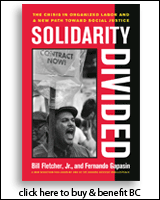
|
 |
 |
 |
| |
| |




















